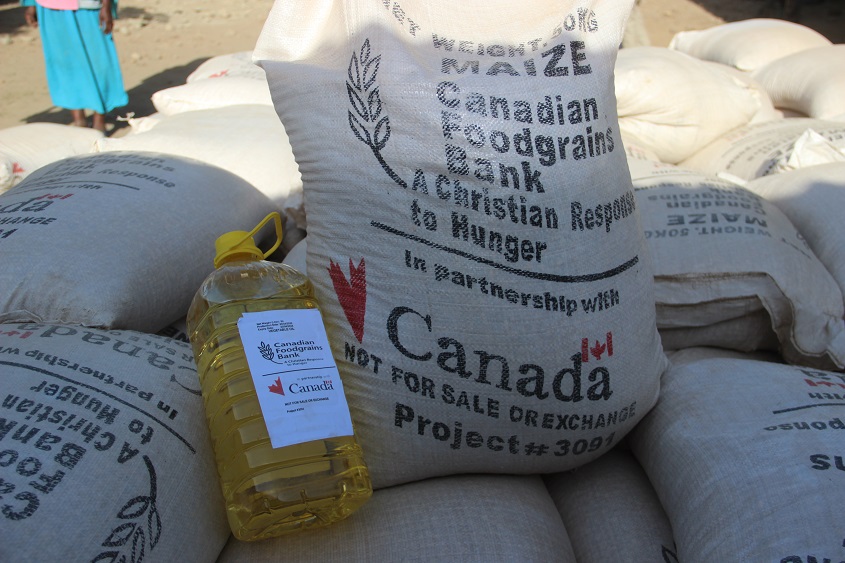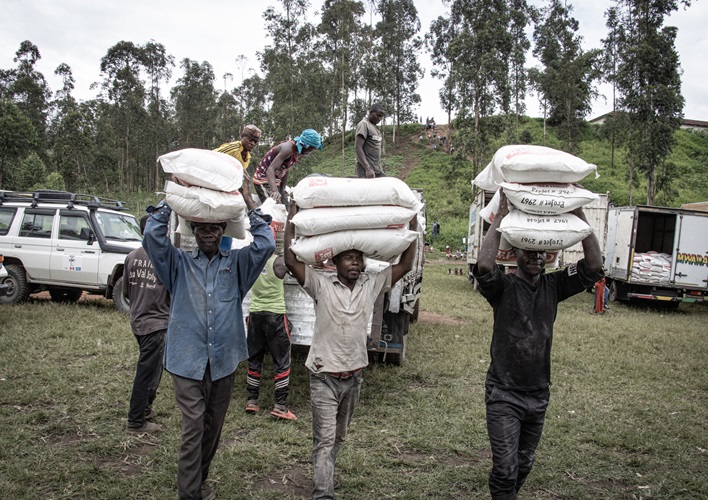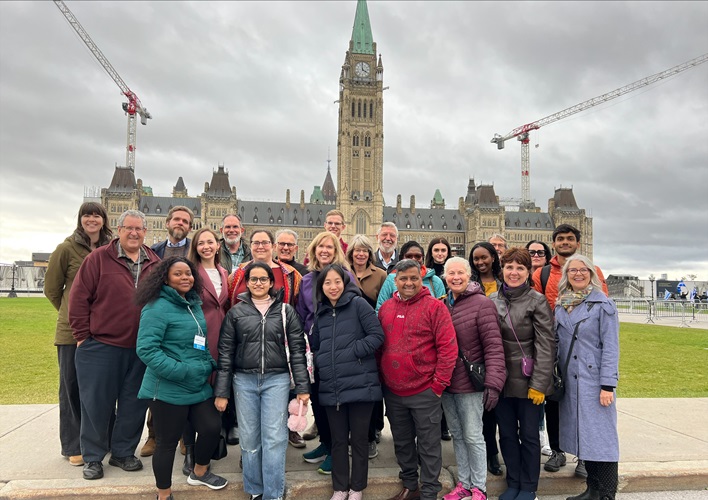At Canadian Foodgrains Bank, we are always improving the quality, effectiveness and efficiency of our programming to ensure our work meets the goals we set in our mission to end hunger.
To us, appreciating the evaluation of our programming, systems and overall effectiveness is one of the ways we continue to learn and grow.
One recent evaluation focused on the impacts of a five-year grant agreement between Canadian Foodgrains Bank and Global Affairs Canada, between 2016 and 2021. The independent external evaluation assessed, from an objective perspective, programs supported by the Foodgrains Bank in addressing food consumption needs and preventing malnutrition. This grant is focused on the provision of emergency food assistance in humanitarian contexts.
It found that Foodgrains Bank programming overall was effective in meeting outcomes, was well-targeted, and locally relevant. A key driver of our work being contextually effective is the structure of our network, which operates through local implementing partners of our 15 Canadian member agencies. The evaluators also observed how well our programming adhered to principles of impartiality, and prioritization of the most vulnerable.
One of the recommendations made was to fund more programming in the area of nutrition – noting that ‘only a small proportion of GAC funding was allocated to critical nutrition needs.’ This is because the grant was focused on food assistance, and funding for nutrition-specific activities was capped at $2.5 million of the $25 million allocated yearly to this work through the Global Affairs Canada-funded grant. This meant that only about 10% of the entire grant was earmarked for nutrition-specific activities, with the remaining 90% going to emergency food assistance for people facing severe levels of food insecurity.
So, what’s the difference between nutrition programming and food assistance programming? Doesn’t food assistance always include nutrition?
In humanitarian settings, individuals are food secure when they have access to essential food on a regular basis. When project participants are chosen to receive emergency food assistance, it is because they cannot access their family’s basic food needs. Factors that impact food security vary, but they include poverty, natural disasters, conflict, climate and economic instability.
The focus of a food assistance program is to support access to food. Around the world in places where local partners are working, food assistance may come in the form of cash vouchers, culturally appropriate and nutritious monthly food baskets, or other types of interventions that will protect household food consumption, reduce suffering and help improve food security.
We work to ensure our food assistance programming is well-targeted, timely, and preventative – preventing loss of assets and preventing malnutrition.
Nutrition programs are often focused on children under the age of 5, or pregnant and lactating mothers who are vulnerable to malnutrition because of their higher nutrient requirements. These programs can be implemented as stand-alone programs in places where malnutrition levels are high, or as part of a wider food assistance response encompassing multiple different forms of support, depending on the specific context.
Our nutrition programming has been largely successful and is done through our members who have local partners with specialized nutrition expertise. The importance of this programming was noted by evaluators in their report, with a recommendation that additional funding be provided for nutrition-specific activities. We would welcome additional funding in this area to grow the capacity of our network in doing more of this important work globally.
Another recommendation made in the evaluation was to consider how we transition communities from emergency food assistance to nutrition support and longer-term recovery. In a crisis context, needs can change quickly depending on specific circumstances. Having the opportunity to adapt programming from its original design would allow partners greater flexibility to serve their communities as best as possible.
This crucial funding helps to ensure that more families are able to receive emergency food assistance through our member agencies and their partners. Knowing food assistance is on the way helps to ensure families won’t go hungry at a time of crisis, and that they won’t resort to negative coping strategies, such as selling their assets or removing children from school, in order to access food.
“Forty years ago, the Foodgrains Bank was started in response to the famine in Ethiopia. Today, we’re still committed to continuous improvement and to doing all we can to ensure that no family goes hungry,” says Foodgrains Bank executive director Andy Harrington.
“We’re grateful for the support of the Government of Canada and to generous Canadians across the country, who enable us to do more to fight hunger than we could on our own.”




